A short linear object of length l lies along the axis of a concave mirror of focal length
at a distance u from the pole of the mirror. The size of the image is approximately
equal to
1.
2.
3.
4.
A thin rod of length /3 lies along the axis of a concave mirror of focal length . One
end of its magnified image touches an end of the rod. The length of the image is
1.
2.
3. 2
4.
A glass hemisphere of radius 0.04 m and R.I. of the material 1.6 is placed centrally
over a cross mark on a paper (i) with the flat face; (ii) with the curved face in contact
with the curved face in contact with the paper . In each case the cross mark is viewed
directly from above. The position of the images will be
1. (i) 0.04 m from the flat face: (ii) 0.0225m below the flat face
2. (i) At the same position of the cross mark; (ii) 0..225 m below the flat face
3. (i) 0.225 m from the flat face; (ii) 0.04 m from the flat face
4. For both (i) and (ii) 0.225 m from the highest point of the hemisphere
A ray of light at the glass-water interface at an angle i, it emerges finally to the surface of water, then the value of would be
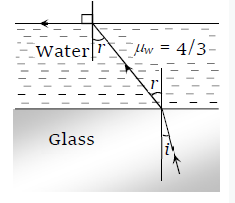
1. (4/3) sin i
2. 1/sin i
3. 4/3
4. 1
A hollow double concave lens is made of very thin transparent material. it can be filled
with air or either of two liquids L and L having refractive indices n and n respectively
(n>n>1). The lens will diverge a parallel beam of light if it is filled with
1. Air and placed in air
2. Air and immersed in L
3. L and immersed in L
4. L and immersed in L
A spherical surface of radius of curvature R separates air (refractive index 1.5). The centre of curvatures is in the glass. A point object P placed in air is found to have a real image Q in the glass. The line PQ cuts the surface at a point O, and PO = OQ. The distance PO is equal to
1. 5R
2. 3R
3. 2R
4. 1.5R
A container is filled with water ( = 1.330 upto a height of 33.25 cm. A concave mirror is placed 15 cm above the water level and the image of an object placed at hte bottom is formed 25 cm below the water level. The focal length of the mirror is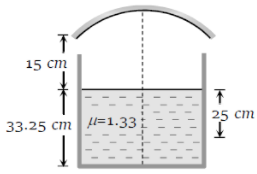
1. 10
2. 15
3. 20
4. 25
The diameter of moon is 3.5 10 km and its distance form the earth is 3.8 10
km. lf it is seen through a telescope whose focal length for object and eye lens are 4
m and 10 cm respectively, then the angle subtended by the moon on the eye will be
approximately
1. 15
2. 20
3. 30
4. 35
A person runs with a speed u towards a bicycle moving away from him with speed v. The person approaches his image in the mirror fixed at the rear of the bicycle with a speed of
1. u - v
2. u- 2v
3. 2u - v
4. 2(u - v)
A fish rising vertically up towards the surface of water with speed 3 observes a bird diving vertically down towards it with speed 9 . The actual velocity of bird is

1. 4.5
2. 5
3. 3.0
4. 3.4
A double convex lens, lens made of a material of refractive index , is placed inside two liquids or refractive indices and , as shown. >>. A wide, parallel beam of light is incident on the lens from the left. The lens will give rise to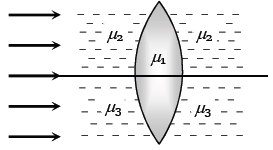
1. A single convergent beam
2. Two different convergent beams
3. Two different divergent beams
4. A convergent and a divergent beam
In a compound microscope, the focal length of the objective and the eye lens are 2.5 cm ad 5 cm respectively. An object is placed at 3.75 cm before the objective and image is formed at hte least distance vision, then the distance between two lenses will be (i.e. length of the microscopic tube)
1. 11.67 cm
2. 12.67 cm
3. 13.00 cm
4. 12.00 cm
The apparent depth of water in cylindrical water tank of diameter 2R cm is reducing at
the rate of x cm/minute when water is being drained out at a constant rate. The
amount of water drained in c.c per minute is (n=refractive index of air, n= refractive
index of water)
1.
2.
3.
4.
The graph between the lateral magnification (m) produced by a lens and the distance of the image (v) is given by
1. 
2. 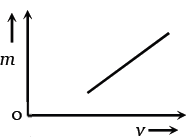
3. 
4. 
The graph shows the variation of v with a change in u for a mirror. Points plotted above the point P on the curve are for values of v 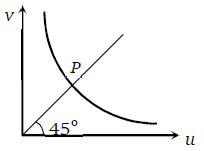
1. Smaller then f
2. Smaller then 2f
3. Larger then 2f
4. Larger then f
The graph shows how the magnification m produced by a convex thin lens varies with
image distance v. What was the focal length of the used
1.
2.
3.
4.
Which of the following graphs shows the appropriate variation of refractive index with wavelength
1. 
2. 
3. 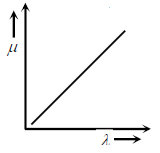
4. 
For a concave mirror, if the real image is formed the graph between is of the form
1. 
2. 
3. 
4. 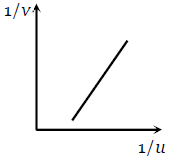
If x is the distance of an object from the focus of a concave mirror and y is the distance of the image from the focus, then which of the following graphs is correct between x and y
1. 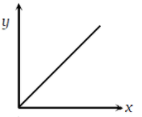
2. 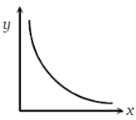
3. 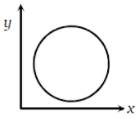
4. 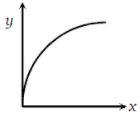
A graph is plotted between angle of deviation and angle of incidence (i) for a prism. The nearly correct graph is
1. 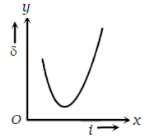
2. 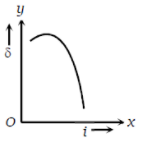
3. 
4. 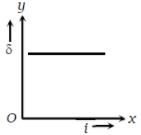
Which of the following graphs is the magnification of a real image against the distance from the focus of a concave mirror
1. 
2. 
3. 
4. 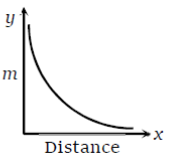
The graph between sine of angle of refraction (\(\sin r\)) in medium 2 and sine of angle of incidence (\(\sin i\)) in medium 1 indicates that: (Given \(\tan ~36^\circ \approx \frac{3}{4}\))
| 1. | total internal reflection can take place. |
| 2. | total internal reflection cannot take place. |
| 3. | any of (1) and (2). |
| 4. | data is incomplete. |
The refracting angle of prism is A and Refractive index of material of prism is cot
The angle of minimum deviation si
1. 180 3 A
2. 180 + 2A
3. 90 A
4. 180 2A